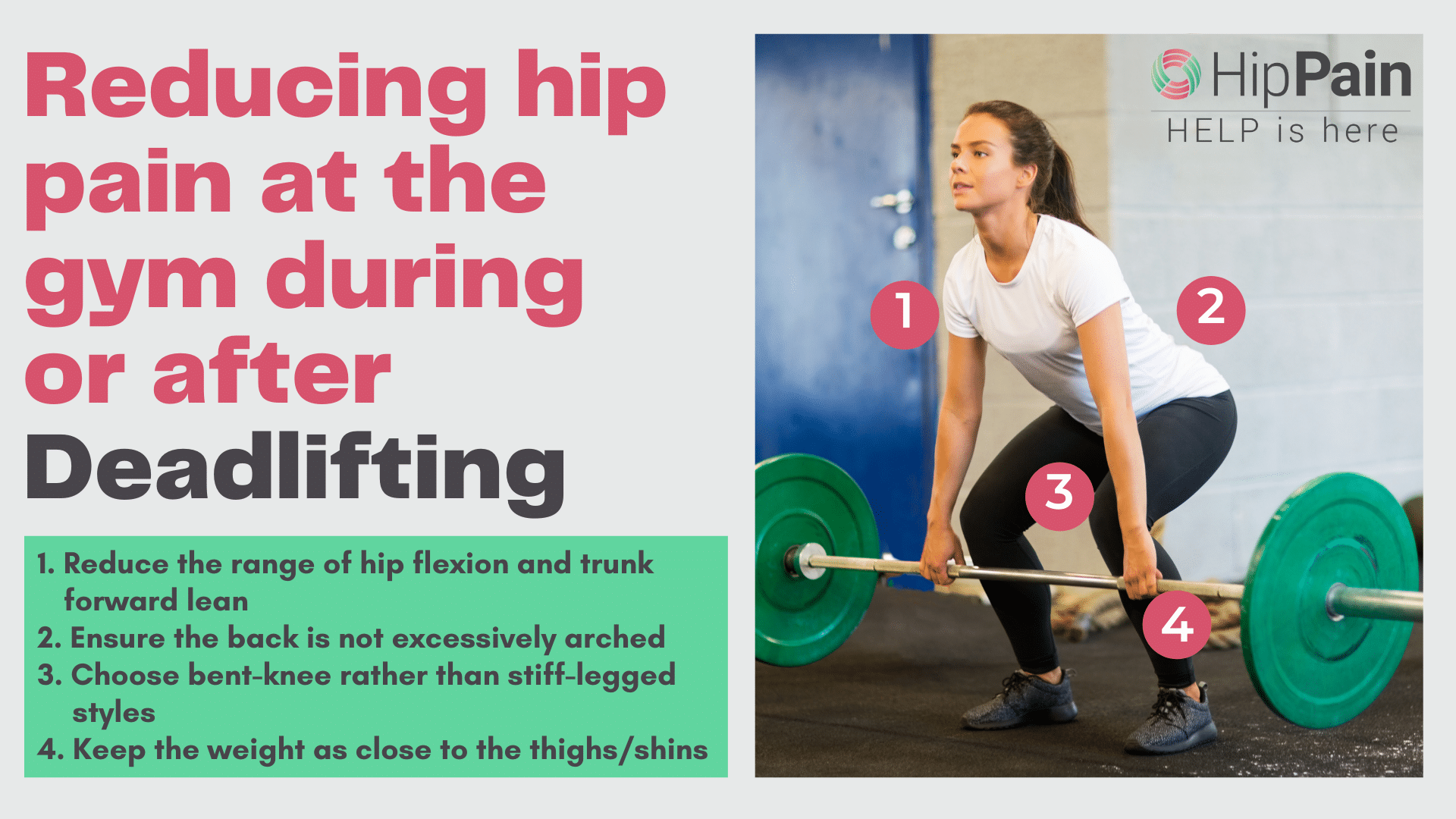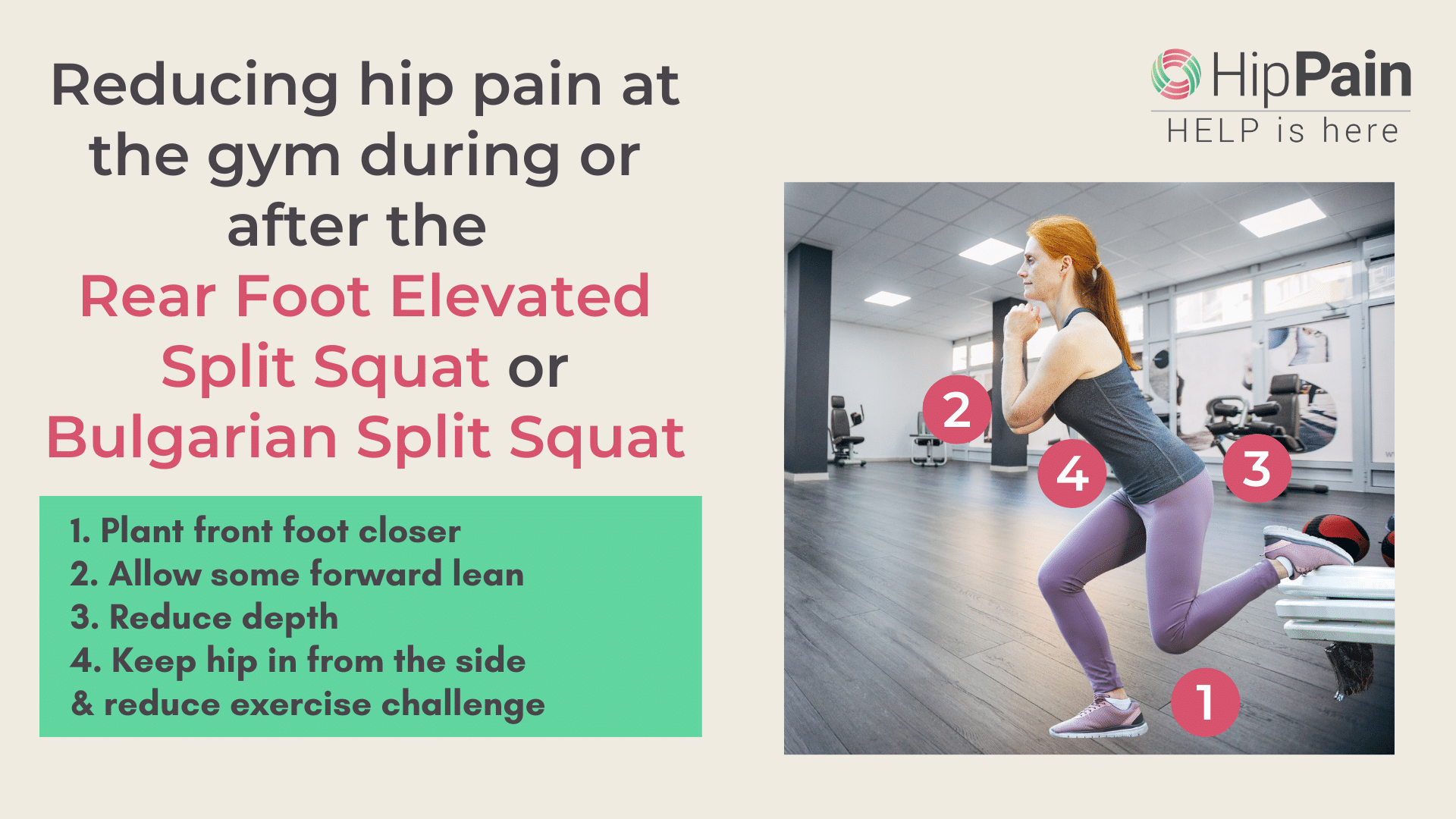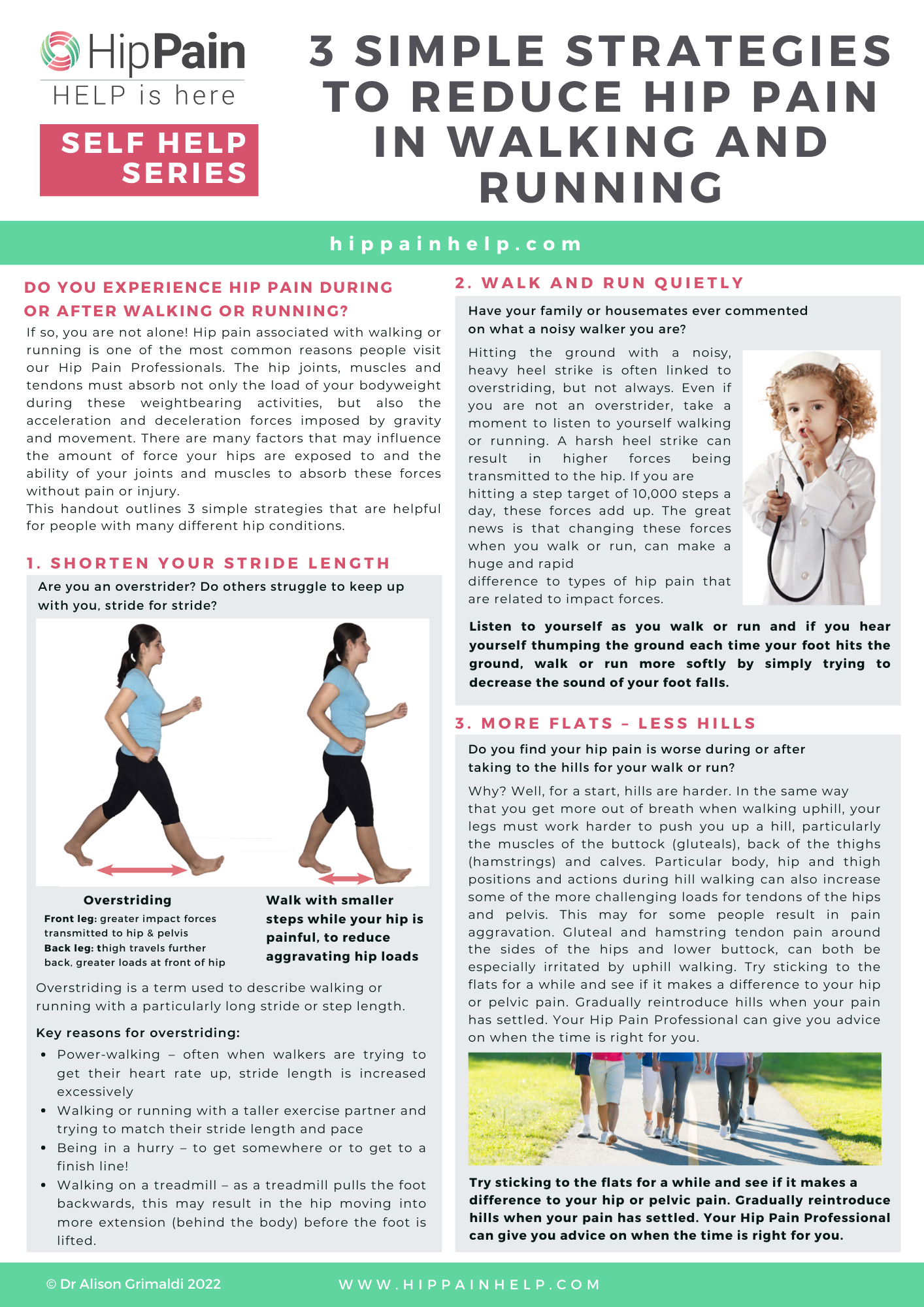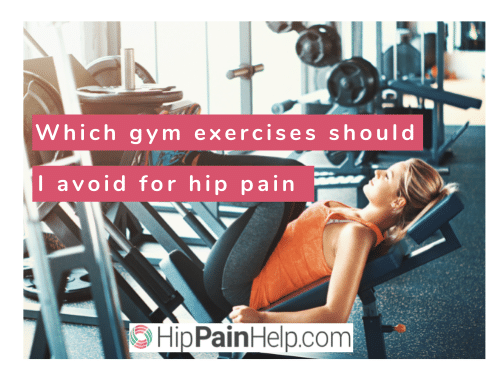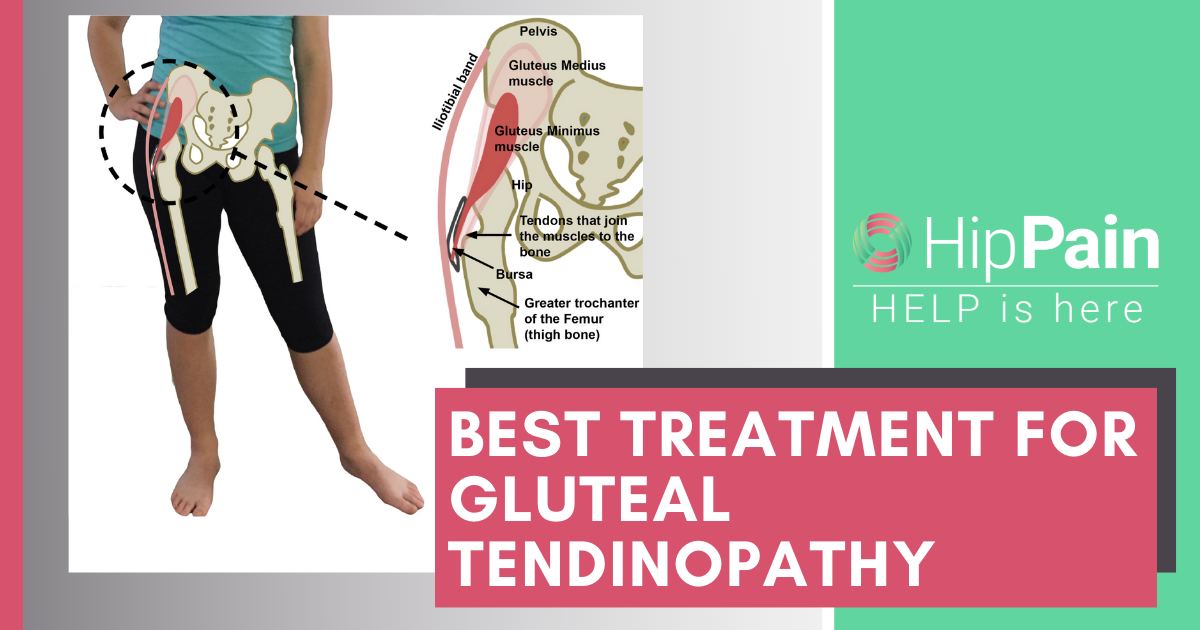
In this second blog of our 2-part series, we look at ways to reduce hip pain at the gym, whether you develop pain or other symptoms immediately or over the 24 hours after a workout. The first blog of this series answered the question “Which gym exercises should I avoid for hip pain?” This blog helped you understand why certain exercise might aggravate your hip pain.





